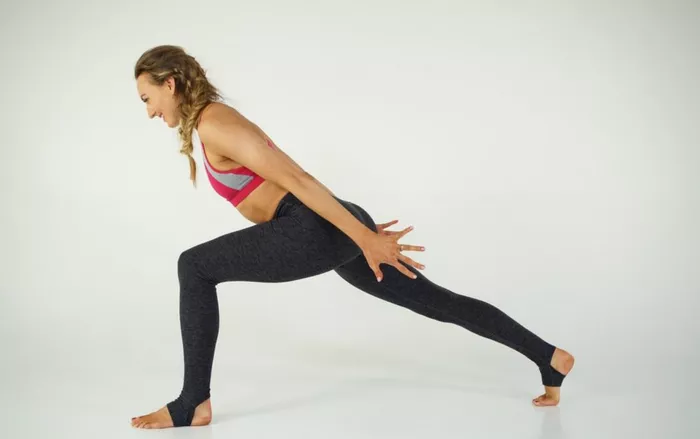Yoga has become increasingly popular over the years, with many people turning to this ancient practice not only for stress relief and flexibility but also as a way to get in shape. But the question remains: Can yoga really help you get in shape? The short answer is yes, but there’s a lot more to it. In this article, we’ll dive deep into how yoga can enhance your physical fitness, whether it’s through building strength, improving flexibility, or boosting cardiovascular health. We’ll also examine the role of different types of yoga and the benefits it provides for your body and mind.
The Growing Popularity of Yoga
Yoga is no longer just a niche practice for spiritual seekers or people in search of relaxation. It has entered the mainstream fitness world as a versatile form of exercise that people of all ages and fitness levels can practice. Whether it’s a vinyasa class at your local gym, a peaceful yin session at a wellness retreat, or a fast-paced hot yoga session in a heated room, there is a style of yoga for nearly every type of fitness goal.
Why Yoga is Gaining Popularity
In recent years, studies have shown that yoga is effective not just for mindfulness, but also for improving physical health. Yoga helps to release tension in the body, reduce stress, and enhance mobility, which are all essential components for maintaining a healthy lifestyle. In addition, it offers a holistic approach to fitness that incorporates the mind, body, and breath in a way that many other forms of exercise do not.
Given all these benefits, it’s no wonder that yoga has caught the attention of so many people looking to get in shape. But what exactly does “getting in shape” mean when it comes to yoga?
What Does “Getting in Shape” Mean?
Before we dive into how yoga can help you get in shape, it’s important to first define what it means to be “in shape.” Getting in shape is often associated with achieving physical fitness, which includes improvements in strength, flexibility, endurance, and cardiovascular health. These are the key elements that many people focus on when they think about working out.
Strength
Strength refers to the muscle power required for various physical activities, from lifting weights to performing daily tasks like carrying groceries. When people say they want to “get stronger,” they often mean they want to build more muscle mass and improve their ability to perform both functional and athletic tasks.
Flexibility
Flexibility is the range of motion in your joints and muscles. It can enhance posture, prevent injury, and allow you to move more freely and easily in everyday life. Improved flexibility is one of the most recognized benefits of yoga, but can it help with other aspects of fitness?
Endurance
Endurance is the ability to sustain physical activity over a long period. It’s often associated with cardiovascular fitness, which is vital for your heart and lung health. While yoga might not seem like a typical cardio workout, certain styles of yoga can significantly improve stamina and endurance.
Cardiovascular Health
Cardiovascular health refers to the efficiency of the heart, lungs, and blood vessels. While yoga is often considered a low-impact exercise, specific styles like Vinyasa or Ashtanga yoga can offer a more intense, heart-pumping workout. So, while yoga may not be as intense as running or cycling, it can still have significant benefits for your cardiovascular system.
Can Yoga Build Strength?
One of the primary components of getting in shape is strength training. Many people might assume that yoga isn’t a good choice for building strength, but that’s far from the truth. Many yoga poses require you to hold your body weight in challenging positions, and over time, this can help build significant muscle strength.
How Yoga Builds Strength
In many yoga practices, particularly those that involve standing poses, arm balances, and inversions, your body works against gravity to build strength. These poses activate multiple muscle groups, requiring your core, legs, arms, and back to work in unison to maintain balance and stability. Some common yoga poses that help build strength include:
Downward-Facing Dog – This pose strengthens the arms, shoulders, and legs while also engaging the core.
Plank Pose – A great full-body exercise that targets the arms, chest, core, and legs.
Chair Pose – This pose strengthens the legs, glutes, and core.
Warrior Poses – Warrior I, II, and III work the legs, hips, and core, and build balance and coordination.
Crow Pose – An arm balance that challenges the arms, wrists, core, and hip flexors.
By regularly practicing these strength-building poses, you can build muscle endurance and strength, which are essential for overall fitness. For those looking for a full-body workout, a yoga practice that emphasizes both standing poses and floor work can help target all major muscle groups.
Does Yoga Improve Flexibility?
Flexibility is one of the most well-known benefits of yoga. Over time, yoga can improve the range of motion in your muscles and joints, which can reduce the risk of injury, improve posture, and make daily movements easier.
How Yoga Improves Flexibility
Yoga poses often focus on lengthening and stretching the muscles, which helps to improve flexibility. Regular practice encourages the body to move through different ranges of motion, and over time, this increases the elasticity of muscles and connective tissues, such as tendons and ligaments.
Forward Folds (e.g., Standing Forward Fold) help lengthen the hamstrings and lower back.
Hip Openers (e.g., Pigeon Pose) release tightness in the hips, which is beneficial for people who sit for long periods.
Spinal Twists (e.g., Revolved Triangle Pose) increase flexibility in the spine and improve posture.
The more consistently you practice, the more your body will adapt to deeper stretches and greater flexibility. Yoga practitioners often experience increased flexibility in areas like the hamstrings, hips, shoulders, and back, leading to better mobility and less discomfort in everyday activities.
Can Yoga Improve Cardiovascular Health?
While yoga is generally considered a low-impact activity, certain types of yoga can offer a heart-healthy workout that helps improve cardiovascular fitness.
Yoga as Cardio
The intensity of yoga varies greatly depending on the style. Some yoga styles focus on relaxation and stretching, while others are more vigorous and can help elevate your heart rate, which is essential for cardiovascular health.
Vinyasa Yoga is a dynamic, flow-based style that involves continuous movement and breathwork, which can help improve heart health and stamina.
Ashtanga Yoga is a more structured, physically demanding form of yoga that involves a set series of postures performed in rapid succession. This style of yoga provides an excellent cardiovascular workout.
Hot Yoga (Bikram or heated Vinyasa) is practiced in a heated room, making it a more intense form of exercise that can elevate the heart rate and promote cardiovascular conditioning.
By practicing these more dynamic forms of yoga, you can improve circulation, strengthen your heart, and even burn calories, all of which contribute to better cardiovascular health.
Yoga for Weight Loss
Another popular question is whether yoga can help with weight loss. While yoga is not typically considered a high-calorie-burning exercise, certain styles of yoga can contribute to weight loss, particularly when combined with a balanced diet and other physical activities.
How Yoga Supports Weight Loss
Yoga helps reduce stress, which is often a major factor in emotional eating and weight gain. Yoga also promotes mindfulness, which can lead to healthier eating habits and a more balanced lifestyle.
In terms of physical activity, styles like Vinyasa and Power Yoga provide a more intense workout that can help you burn calories and improve your metabolism. A consistent yoga practice, combined with healthy eating, can help you achieve sustainable weight loss goals over time.
See Also: Does Yoga Change Your Body?
The Mental Benefits of Yoga
While getting in shape physically is a key focus for many people practicing yoga, it’s important not to overlook the mental and emotional benefits of yoga. Yoga is a practice that connects the mind, body, and breath, offering mental clarity, stress relief, and emotional well-being.
How Yoga Improves Mental Health
Yoga has been shown to reduce symptoms of anxiety, depression, and stress. This is partly due to its emphasis on deep breathing, relaxation, and mindfulness. By practicing yoga regularly, you can improve your overall mental health, which can lead to better motivation and focus on your fitness journey.
Yoga is also known to improve sleep, increase body awareness, and enhance mood, all of which contribute to a healthier lifestyle overall.
Conclusion
In conclusion, yes—yoga can absolutely get you in shape. It can help build strength, improve flexibility, boost cardiovascular health, and support mental well-being. While yoga might not provide the same level of intensity as running or weightlifting, its comprehensive approach to fitness makes it a highly effective practice for overall health and wellness.
Ultimately, the best way to get in shape is to find an exercise routine that works for your body and your goals. For many people, yoga offers the perfect balance of physical fitness and mental clarity, making it an excellent addition to a healthy lifestyle.
So, whether you’re looking to build muscle, increase flexibility, improve your heart health, or simply relieve stress, yoga can be an incredibly effective and rewarding way to get in shape.
You Might Be Interested In:























